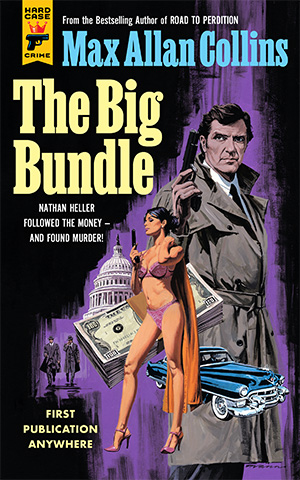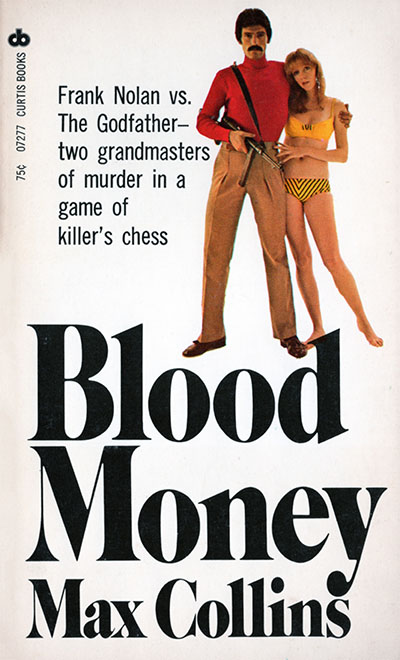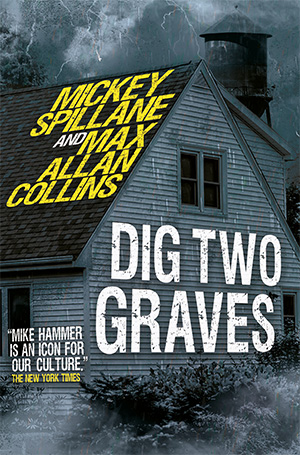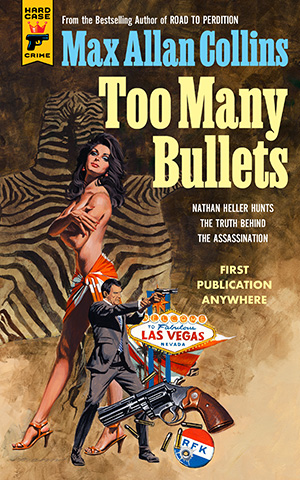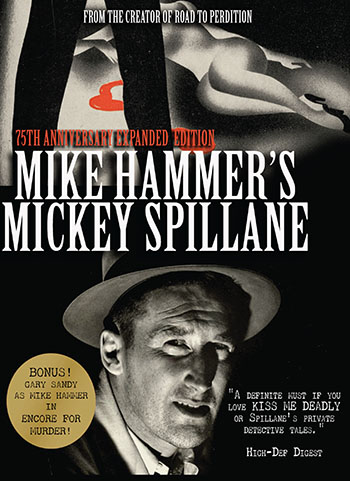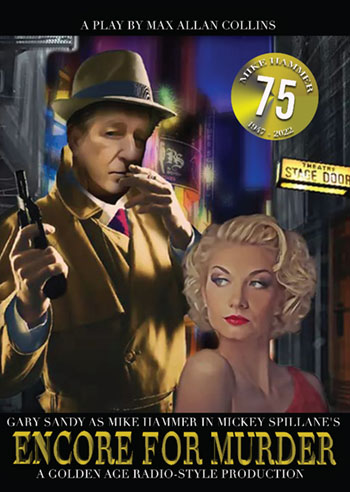The Big Bundle with Nathan Heller is out in trade paperback from Hard Case Crime today. If you’ve not read it, what are you waiting for? What’ll it take, a free copy?
Okay. The first ten of you who write me at macphilms@hotmail.com will get one fresh off the presses in return for writing a review at Amazon or Barnes & Noble or Goodreads or your own blog or whatever. Due to shipping costs, this is open to US Residents only. Yes, it’s another free book giveaway – Merry Christmas!
Also, any of you who have been good enough to buy and read the new Heller, Too Many Bullets, need to write a review at Amazon and elsewhere, toot sweet. As I’ve harped about here, because of a dock strike in the UK last year, the hardcover edition of The Big Bundle didn’t hit our shores until this year, months after its 2022 publication, sending it careening into this year’s Heller, Too Many Bullets, and causing the trade reviewers in the US to ignore the second book – no review in any of ‘em (Publisher’s Weekly, Kirkus, Booklist, Library Journal), which hurts brick-and-mortar bookstore sales and library sales, too. And not a single appearance on any “best of the year” mystery lists, despite some of them being voluminous.
So please fight back with posting a review. (If you hated the book, why not find something else to do with your time?)
We are soon to launch the crowd-funding effort to help launch the ambitious Nate Heller podcast series adapting as many of the novels as possible (starting with True Detective and True Crime) with me scripting and Todd Stashwick (of Twelve Monkeys and Picard Season Three fame playing Nate Heller. I hope to get my pal Dave Thomas to portray Mayor Anton Cermak – he’s said yes, tentatively.
The great Robert Meyer Burnett is producing/directing the project, and frequently mentions what we’re calling True Noir on his popular podcasts (he does several). He’s been good enough to hold Too Many Bullets up for the camera to catch, and frequently.
To promote True Noir and the publication in trade paperback of The Big Bundle and in hardcover of Too Many Bullets, I’ve done an interview with Titan mastermind Andrew Sumner that you can find here.
Andrew is fantastic interviewing the likes of me, and Titan and their sister publisher Hard Case Crime have been responsible for keeping me and Nate Heller (and Quarry and even Nolan!) afloat despite this uptight politically correct climate. Andrew Sumner and Charles Ardai are the champs who have kept Heller and me in the game.
In the meantime, producer/editor Chad Bishop and I are putting the finishing touches on our film, Blue Christmas. I am thrilled with how it’s come together. Here’s the poster.
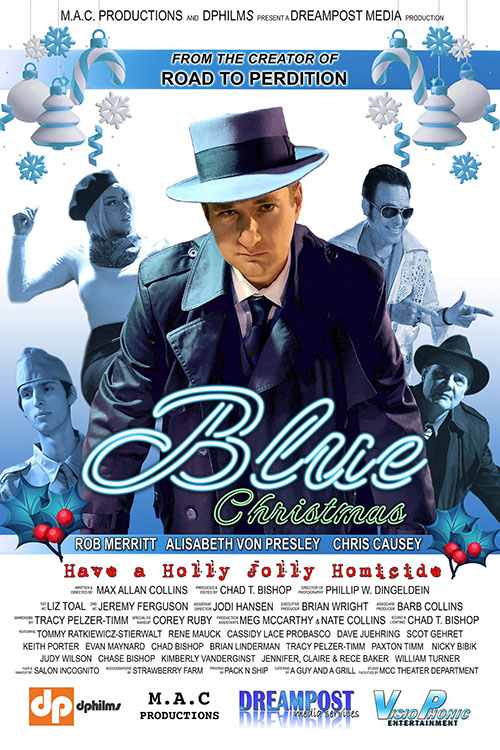
When can you see this? We’re not sure. If the Greenlight grant had come through, we would have shot the feature in time to get it out for this Christmas (2023). Then Greenlight decided to fund a couple of documentaries instead. But we decided to make the darn thing anyway. (I can’t say “damn thing” because it’s, well, Christmas and all.)
We have a distributor already interested, but it will probably be held for Christmas 2024. I’m sure we’ll have some events (local and area premieres, a few film festivals) that may allow you to see it sooner than that. And it’s also possible it will come out much sooner than Christmas 2024 and then be re-promoted at that time.
All I can tell you is that I’m very pleased with how it’s come together. As I say, we are almost done. Chad and I have the edit where we want it, with just one little Second Unit shot to grab this coming week. I think my grandson Sam is going to be in that shot!
The novella on which I based the screenplay, “A Wreath for Marley,” is dear to my heart for reasons I’ve expressed here numerous times. You can find it in Blue Christmas and Other Holiday Homicides by me and published by Wolfpack. You can also find it in Otto Penzler’s The Big Book of Christmas Mysteries, a Vintage Crime Black Lizard original.
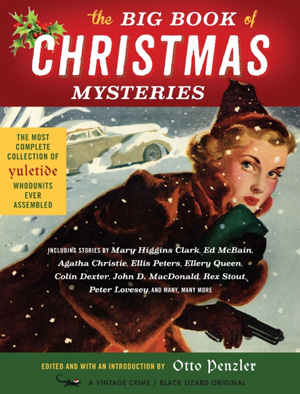
Barb and I make a habit of watching a Christmas movie every evening in December. I’ve written about my favorites here before, but here they are again:
THE TOP FIVE
1. Scrooge (1951). Alistair Sim is the definitive Scrooge in the definitive filming of A Christmas Carol.
2. Miracle on 34th Street (1947). Hollywood filmmaking at its best, with Edmund Gwen the definitive, real Santa Claus, Natalie Wood in her greatest child performance, John Payne reminding us he should have been a major star, and Maureen O’Sullivan as a smart, strong career woman/working mother who could not be more glamorous.
3. It’s a Wonderful Life (1946). Heartwarming but harrowing, this film is home to one of James Stewart’s bravest performances and happens to be Frank Capra’s best film. (I thanked him for it in the Green Room at Good Morning America in 1981 – promoting the Dick Tracy comic strip.)
4. A Christmas Story (1983), Jean Shepherd’s unlikely claim to fame, and a Christmas movie with Mike Hammer and Carl Kolchak in it. Now if the PBS specials about Ralphie and his family would only emerge on legal home video!
5. Christmas Vacation (1989) uncovers every Christmas horror possible when families get together and Daddy tries too hard. This holds up very well and has unexpectedly eclipsed the original film.
THE WONDERFUL RUNNERS UP:
Bad Santa (2003). This dark comedy has a warm heart, but you have to wade through a whole lot of black humor to get there. Billy Bob Thornton is wonderful, but here’s a special salute to the late John Ritter (who apparently died during the production) for the funniest moments in a side-splitting film. It’s become a Christmas classic at our house, and the very underrated sequel,
Bad Santa 2 (2016), is perhaps even funnier with Kathy Bates almost stealing the picture playing Billy Bob Thorton’s mother, who deserves more coal than anybody in either picture.
Holiday Inn (1942) is easily better than White Christmas, although the latter has its charms – it’s helped keep Danny Kaye from being forgotten, for one, and my late pal Miguel Ferrer’s mom is in it. The original has better songs and is funnier and ultimately more heart-warming.
Bell, Book and Candle (1958) is an old favorite of ours, the the movie Kim Novak and James Stewart made together after Vertigo. With Jack Lemmon and Ernie Kovacs stealing scenes left and right, it’s a precursor to
Bewitched and might seem a better choice for Halloween, only it’s set at Christmas. I love the George Dunning score (he did some of the best scores for the original Star Trek TV series).
The Family Man (2000) with Nic Cage, a modern reworking of It’s a Wonderful Life, heartwarming and funny. Cage may be an over-the-top actor, but the man commits – he gives one thousand percent to every performance, and this time he has a wonderful movie to do it in. This is a favorite of my son Nate’s, whose goals in life include seeing every Nic Cage movie.
The Twelve Days of Christmas (2004). Okay, so it’s a shameless reworking of Groundhog Day as a Christmas movie, but this admittedly minor TV flick is funny and rewarding – good-hearted but with a darkly comic sensibility. Steven Weber is excellent as the successful slick businessman (similar to Cage in The Family Man) who has twelve tries to get Christmas Eve right. Molly Shannon gets her best post-SNL role.
Remember the Night (1940) is probably second best (after Double Indemnity) of the films Barbara Stanwyck and Fred McMurray made together. It’s written by Preston Sturges – should I really have to say anything more? – and makes its humanistic points with sentiment, not sentimentality. It’s really a gem worth looking for.
I, the Jury (1953). The Classic Flix multiple disc set (with both 4K and 3-D versions, as well as Blu-ray) is finally a reality and anyone following this update/blog probably has already made that essential purchase. But this much underrated first Mike Hammer movie is set at Christmas and plays off of that fact throughout, with Christmas cards and carols the connective tissue between scenes. I continue to feel Biff Elliott was much underrated, and the cast is filled with wonderful character actors. The great John Alton shot it.
A Christmas Horror Story (2015) features William Shatner, excellent as the comic glue (a disc jockey) holding together inter-related stories about Krampus and Christmas. There are almost as many horror movies about Christmas as there are Christmas movies, but this is one of the best. It was put together by many of the Orphan Black people.
Office Christmas Party (2016) is a raunchy comedy whose preview in the theater (remember those?) turned me off. Somehow I wound up seeing it on Blu-ray and turns out it’s very funny and eventually betrays a good heart. The great cast includes Jason Bateman and Kate McKinnon.
A Bad Moms Christmas, recommended to me by Mark Lambert (who produced my documentary Caveman and is an associate producer on Blue Christmas), is an unlikely combination of raunchy humor and even dark comedy of the Bad Santa sort but an overwhelmingly good heart. It’s worth seeking out. Thanks, Mark!
Scrooge (1970) is the second-best Christmas Carol movie. Albert Finney is wonderful as Ebenezer in this musical version, with the Leslie Briccuse score perhaps the one most like his work with Anthony Newley, who did not contribute to this score but who played in the much-seen British stage version (which came after the film).
Also, don’t forget It Happened One Christmas (1977), which I wrote about here a while back.
NEW ADDITION: Silent Night, the great John Woo’s return to theater screens after something like a two-decade absence, isn’t being greeted with much if any fanfare. But it’s a taut, harrowing revenge drama in the Death Wish mold, but better than any entry in that franchise. The underrated Joel Kinnaman (so good in the American version of The Killing mini-series) has the lead, and has virtually no dialogue. The movie itself, except for TV broadcasts and background noise, is essentially a silent movie…well, there’s the gunfire and explosions, a lot of them. The film takes the time to show Kinnaman training for his assault on the gangbangers’ hideout (my favorite moment is Kinnaman writing on his calendar, on the date Dec. 24, Kill Them All! The final half hour rivals the two Raid movies and is perhaps even more intense and effectively staged. I loved the hardboiled nastiness married to the occasional melodramatic, even sentimental moments of reflection by the vengeful father, between killings. And Woo uses Christmas imagery well and imaginatively.
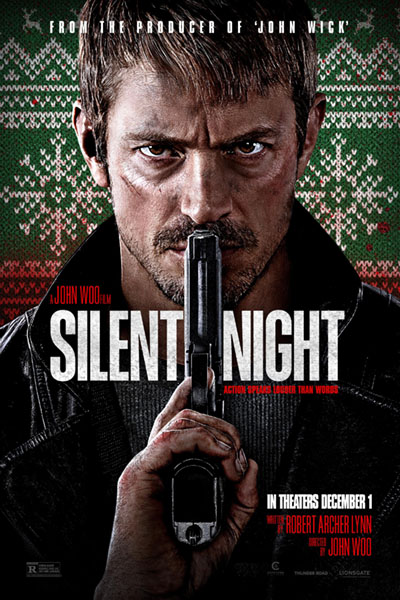
Too Many Bullets reviews are coming in, thanks to the Good Folks at the Internet. Borg has a good one here.
Ed Catto at Pop Culture Squad has nice things to say about the latest Spillane/Collins Mike Hammer novel, Dig Two Graves.
A nice Goodreads review can be read here (and, below, more of the same and a very few naysayers, the world being a place where you find all kinds – I should know…I was at WalMart today!).
M.A.C.
